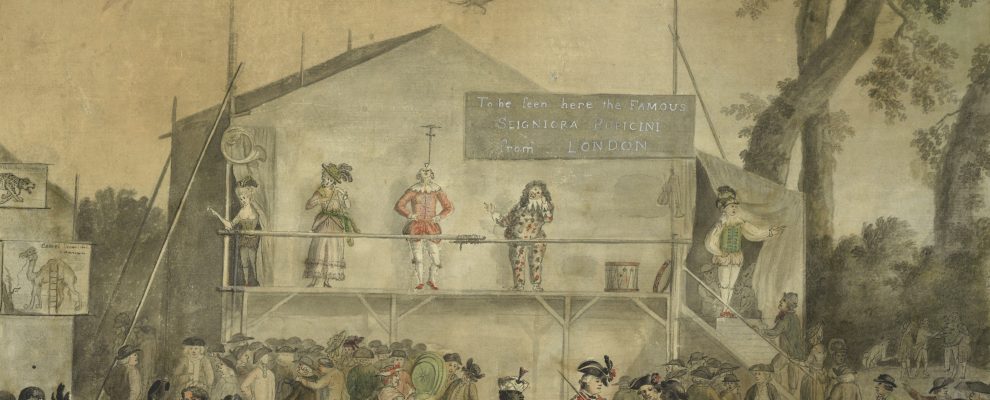The excitement of the fairground, with its diverse attractions and spectacles, refreshment stands and hundreds of stalls, saw a cross section of society join together to be entertained, including the royal family who attended St Bartholomew’s fair every year between 1714 and the 1740s. This fusion of classes all looking to enjoy the panoply of entertainments on offer was described in 1739 by Richard Barton who poetically noted:
The populace that croud[sic] the fair,
Where Wapping and St [James] unite,
Pleas’d with coarse objects of delight:
The chambermaid and Countess sit
Alike admirers of the wit:
The Earl and footman tete-a-tete
Sit down contented on one Seat.
Fairs owed part of their appeal to their timing in August and September when the theatres were closed for the summer, or during traditional holidays. Wakes were traditional fairs linked to local saints’ or feast days, whilst other fairs accompanied markets, race meets and civic celebrations. Fairs could last up to two weeks, though towards the end of the century this shortened to around three days. The plethora of entertainments available was often staggering in scope and could range from shows offering farces, shortened plays, biblical tales, puppet and harlequin shows, human and animal oddities, scientific curiosities, contortionists and acrobats. Food and drink stalls, stalls selling haberdashery, rides, as well as spaces for dancing were also in abundance.
St Bartholomew’s Fair was the most important fair in London, held in Smithfield on the northern edge of the city and attracting thousands of visitors each year. Other notable fairs included Southwark Fair, Tottenham Court Fair, Islington Fair, as well as fairs at Tothill Fields, Greenwich and Westminster. York like other provincial cities held fairs or wakes throughout the year, including a ‘frost fair’ on the frozen Ouse.

Source: In Pursuit of Pleasure: Entertaining Georgian Polite Society (Fairfax House, 2016)
